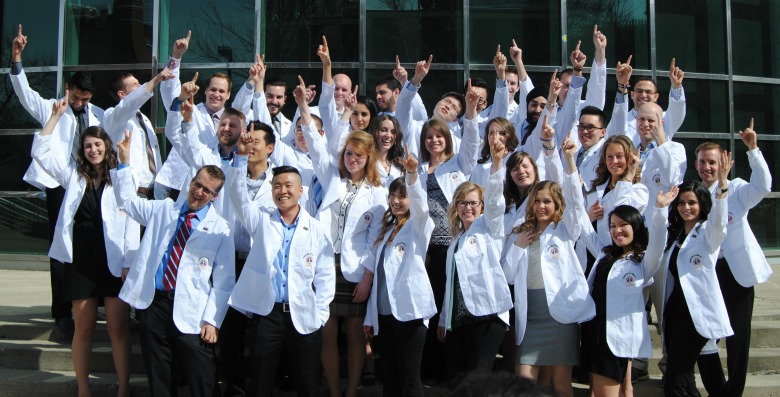
Members of UAlberta's dentistry class of 2016 celebrate their second-year milestone at the 13th annual White Coat Ceremony at the Timms Centre April 30.
But for the second-year dental students at the 13th annual White Coat Ceremony held April 30 at the Timms Centre for the Arts on the U of A campus, it was a new and exciting time, and each group of students brings a different perspective on patient care.
Anthea Senior, clinical associate professor in the School of Dentistry, led the charge to the students.
"So far you have survived 2,760 hours of instruction and 57 exams and quizzes," she said. "There is no doubt in my mind that, by the time you graduate in June 2016, you will have acquired all the knowledge and the accompanying technical skills to provide safe and competent dental care for your patients. (You have 3,120 hours of instruction and 53 exams and quizzes still to come!)
"However, this is only part of the picture as to what will make you a 'good' dentist."
Second-year dental student Andrew Gibb accepted the charge on behalf of the class of 2016.
"Today we receive our white coats, symbolic of our transition to our clinical education. Now, what does the white coat mean? Well, first of all, it's white. This, however obvious, is significant. The Latin word for white is 'candidus,' which is also the origin of the English word 'candor,' meaning openness and honesty in expression, unstained purity, and freedom from bias, or impartiality.
"Our white coats represent what we must be as clinicians: kind, honest and sincere. Our dedication to our patients will drive us to learn, to develop and improve our skills-and to stay up late figuring out anatomy so we don't perfuse the parotid gland with anesthetic, numbing the facial nerve when trying to do a posterior inferior alveolar nerve block."
"There are many people who play a role in the education of our students," said Paul Major, lead of the School of Dentistry. "During milestones like these, we all share in the achievements and know that we are well on our way to graduating competent health-care practitioners."